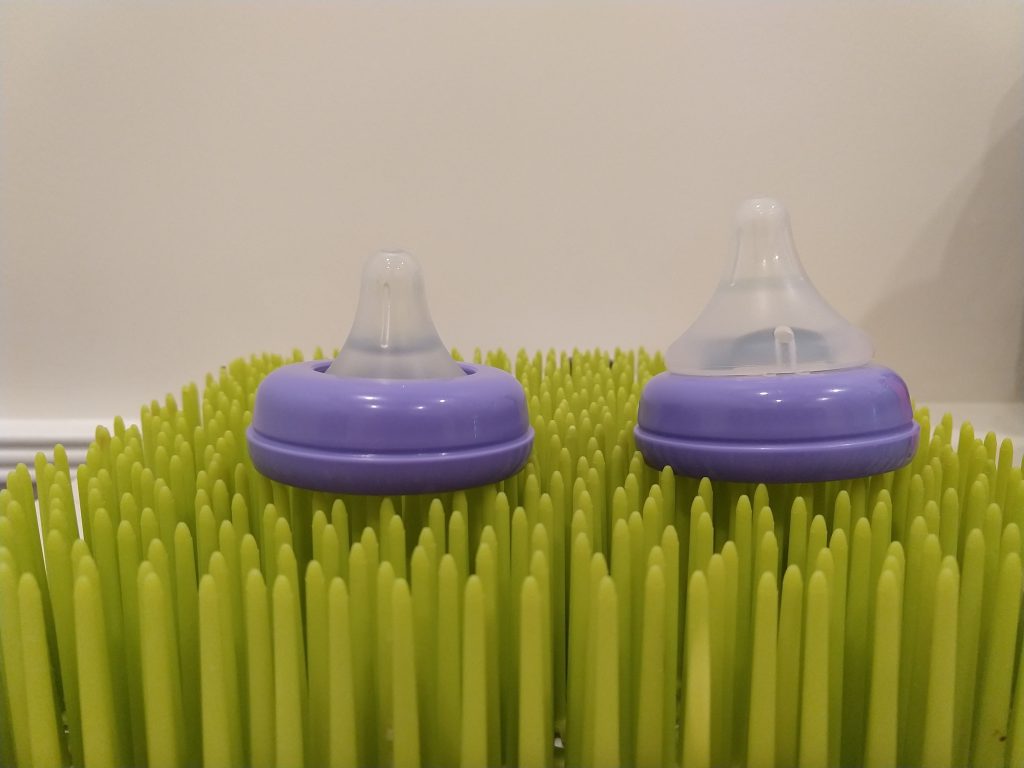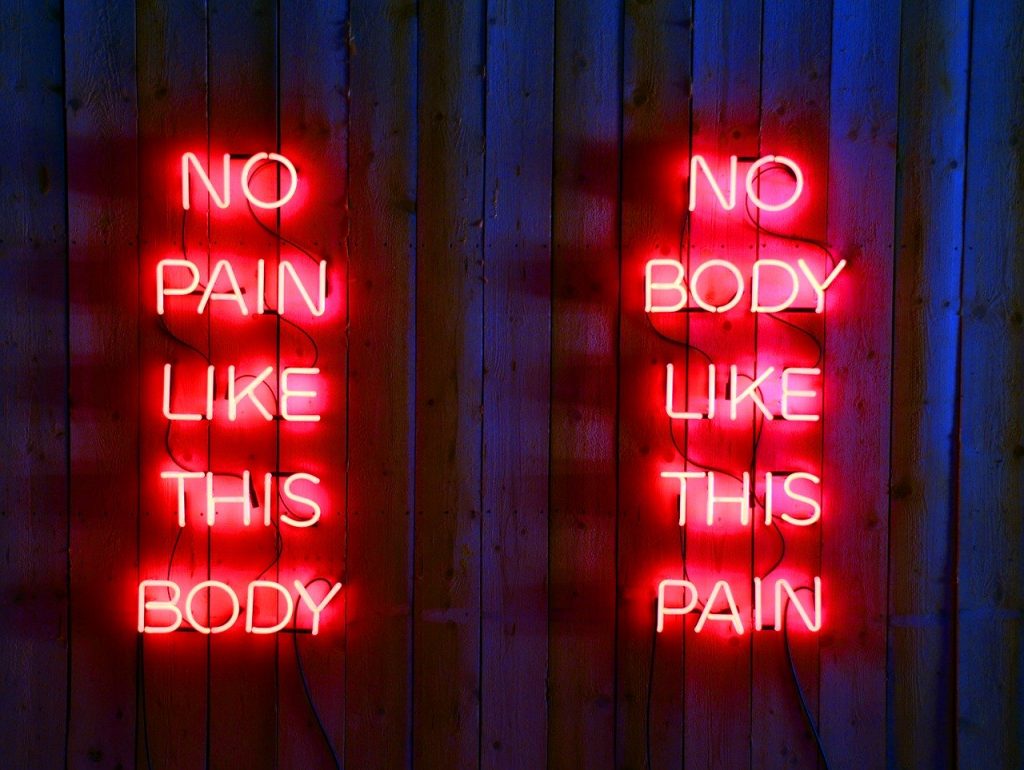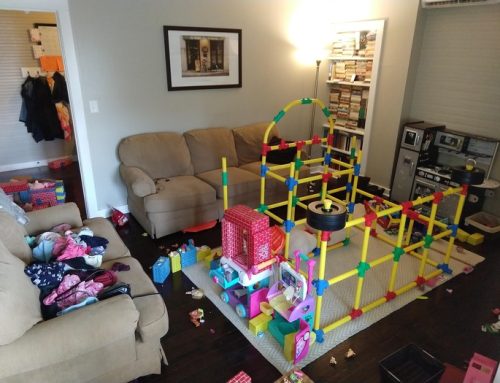Can I get real with you right now? I did something crazy the day I had my first child. After the epic labor and birth of our baby – which I have compared to being in a street fight with my own body – I sustained a major injury and needed immediate surgery.
Afterward, the nurse offered me a Motrin. The anesthetic was going to wear off, and it wasn’t going to feel good. Without hesitating, I said, “No thanks!”
Talk about limiting beliefs examples! On one level I knew that I was doing something foolish, yet on another level, refusing the medication felt “right” … because I was obeying a deeply ingrained self-limiting belief.
Limiting beliefs examples
Turning down a Motrin after surgery sounds bizarre, unless you know how the brain works. See, when your system is spent and your brain is tired, it tends to run along the tracks that are easiest to follow. Past programming is the path of least resistance.
In that moment of exhaustion and emotional overwhelm, I didn’t make a rational, thoughtful decision. Instead, I defaulted to an old belief system, instilled in me during childhood.
Growing up, my family was part of a doomsday cult, the Worldwide Church of God. As such, I heard a lot of messages about distrusting medication, doctors, and anything that wasn’t anointing with oil, laying on of hands, and faith healing.
The underlying beliefs running the show were as follows:
- Don’t take any pain medication if you don’t need it. (Read: if you’re not in agony.)
- Don’t take medication unless you absolutely have to. Actually, even then, don’t take it.
- Your faith alone should make you well.
- Most devastating of all: It doesn’t matter if you’re in pain. It doesn’t matter if you suffer.
The point isn’t how I learned those limiting beliefs. The point is that I hooked into them easily, quickly, and without much volition.
That is the power of underlying thoughts and limiting beliefs – they run your life almost without you knowing it. They lead you to make unhealthy and unhelpful decisions, because you simply don’t see another way forward.
They’re just constructs in your brain, but they have the power to pin you down in pain and suffering.
When the nurse offered me a Motrin and I said no, she looked at me, puzzled. Then she exchanged a glance with my husband, Jonathan. Their expressions were concerned; I read them as, “Whoa, Caroline is not thinking straight.”
To her credit, though, the nurse was respectful: “Okay! If you change your mind, just give me a call.” Jonathan was respectful too. I don’t remember what he said, but I remember his concern for my well-being.
His compassionate response brought me back to the present moment and helped me to snap out of the crazy. Soon I called the nurse back and asked for that Motrin. (It was the first of many.)
How to identify limiting beliefs
Have you ever let yourself run on autopilot and end up somewhere you never meant to be? Or – be honest – do you run on autopilot a lot of the time?
Do you do all the things you’re supposed to and then procrastinate and talk yourself out of the thing you actually want to do? Do you take care of everyone else and neglect your own well-being?
If so, then you already know the power of self-limiting beliefs. But how do you really recognize them for what they are? How do you identify limiting beliefs?
Step 1: As my favorite coach, Dr. Martha Beck, likes to say: Suffering is your friend and ally. Suffering will always show you where you are out of alignment, believing something that isn’t true.
To start spotting your limiting beliefs, make a list of what hurts in your life. What’s causing you the most physical, mental, emotional, and/or spiritual suffering right now?
Step 2: For each item you wrote on the list, for everything you’re doing that’s causing you to suffer, ask yourself some variation of: Why am I doing this? (Or if it’s something you’re not doing, ask: Why am I not doing something else that would help me feel freer and happier?)
Step 3: Ask “Why?” several times if needed. Get at the root cause of your suffering.
For example, in her 2019 Conferences for Women talk, Elizabeth Gilbert identified the sneaky limiting belief, “I should care about everything and everyone equally.” Instead, she argues, we as women need to say, “I don’t care” and liberate ourselves in doing so.
Step 4: Question the limiting belief. Really take it apart. (More on that in a minute.)
Alternatively, one other great way to get at your limiting beliefs is to start not with your suffering, but with your goals. For example:
- What would you do next, if you could do anything?
- What would you do next, if no one would be mad at you?
- What would you do next, if you were truly free?
Martha Beck calls this the “absolutely free” exercise. What would you do, if you were absolutely free? Answer the question honestly, then ask, “Why am I not doing that thing?” Asking, “Why not?” even once or twice will show you which beliefs you need to address.
We’ll talk about how to question and rewrite the limiting belief in a moment, but first, let me give you another example of a sneaky limiting belief that caused me and my husband a lot of struggle and suffering after our second child was born!
Bizarre limiting beliefs examples
When our youngest was four weeks old, our midwife reminded me to introduce bottles, so I’d have the option to be away for more than a few hours if needed.
So I dug out the box from when our older child was small, washed the pump and bottles, and set them up on the drying rack. But when it came to assembling a bottle, I could not get it to work.
I tried to assemble this bottle multiple times on different days, but the bottle top would not stay upright. Increasingly bewildered, I asked my husband Jonathan to help. He had the same experience.
We talked about whether the materials had degraded, whether we needed to buy new parts. We talked about whether we’d had this issue before, but we didn’t think so.
We tried again, and ended up with spilled milk and a screaming baby.
In that moment I felt deeply defeated. I did not want to buy new bottles; I’d already researched these bottles two years ago and they were supposed to be excellent. Resigned, I started looking for new bottles online.
I’m sure you know where this is going. While hunting for new bottles, I saw a picture of the ones we already had. Suddenly it was obvious.
We’d been trying to put the bottle ring on over the top, as you do with most bottles, but with this bottle, you were meant to put the top on OVER the bottle ring. Eureka!

(Left is incorrect, right is correct. Clearly!)
When I assembled the bottle the way it was designed, it worked like a dream. It was simple, straightforward, easy.
I could not believe that both my husband and I had missed something so obvious. We were both intelligent, capable adults!
But then I talked to a close friend, a whip-smart human whose baby ended up in the emergency room because he couldn’t drink from a bottle. Turns out, that bottle still had one of those little storage lids on the top.
I was fascinated by the idea that both of us had had this experience. That’s when it dawned on me that this wasn’t really about baby bottles. This was about human nature.
It was about how we second-guess ourselves constantly, yet we rarely question assumptions such as, “All bottles should be assembled with the ring over the top,” or, “It should work this way.”
How often do we miss the obvious? How often do we try harder, rather than stepping back and seeing the bigger picture? How often do we force ourselves to work in ways that we were never meant to work?
Here’s what I want you to consider today: Maybe the reason you’re feeling overwhelmed, frustrated, or defeated has NOTHING to do with your worth or value as a human being.
Instead, maybe you feel that way because you’re doing with your life what I did with those bottles. Maybe you’re forcing a fit.
Limiting beliefs exercise
So, what if you flipped it? What if you took one assumption that’s causing you grief, and tried the opposite?
I should get more done becomes, I shouldn’t get more done.
I have to make this relationship work becomes, I have to stop trying.
I can’t slow down becomes, I must slow down.
This is perhaps the simplest limiting beliefs exercise; it’s also the last step of The Work of Byron Katie. She calls it the turnaround to the opposite. You take your most painful thought, and look closely at the exact opposite.
In short, you flip the script. Change things up. See what happens when you try the opposite.
You never know – you might just end up getting the nourishment you need.
How to overcome limiting beliefs
Here’s one more example of how to overcome limiting beliefs (this one’s non-baby related!)
During a coaching session I did several years back, a client was suffering a great deal because of a friendship that was bringing her down.
Together, we examined that suffering and discovered the limiting belief: “Friends who survived hard times together should stay close.”
When we start working together, most of my coaching clients have at least one person in their lives who is causing a lot of trouble, be it a friend, partner, or parent. To an outsider, the solution is obvious: put lots of space between yourself and that person!
However, false guilt is keeping them stuck; its fueled by limiting beliefs such as, “I’m responsible for her unhappiness,” “I’m the last person who can help her,” or “It’s mean to want her out of my life.”
Likewise, my client believed that, “Friends who survived hard times together should stay close,” but that belief was bringing her a world of hurt.
Once we discovered that belief, I invited her to question the stressful thought with The Work. Was it true? Could she absolutely know for sure that it was true? How did she react, what happened when she believed that thought? Who would she be without that thought?
We did several turnarounds, the simplest being the turnaround to the opposite: Friends who survived hard times together should not stay close. How might that be as true, or truer?
As I told my client, I recommend writing down your thoughts and answers to the questions about limiting beliefs, rather than just saying them verbally.
(Simply speaking out loud can work with a facilitator, but when you’re solo it’s so easy to get tangled in your own thoughts – we all do it – and writing helps you to stay focused and on-task.)
Lastly, I recommend using self-forgiveness work so that you not only address the issue on the mental level, but also resolve it on the emotional level.
Here is the process I learned from the counseling team at The Clearing, originally taught by Drs. Ron and Mary Hulnick in their spiritual psychology program at the University of Santa Monica.
To do self-forgiveness work, first connect with your loving heart. Focus on a deep, true connection; feel it in your heart’s center. One way to do this is to take yourself to an internal place where you feel deeply safe and peaceful.
You might imagine a physical space in nature or perhaps holding a pet or a loved one close. Whatever you choose, aim for a felt experience of unconditional love.
(If that feels really challenging, it’s OK; just do the best you can. Don’t let perfectionism stop you from doing the rest of the exercise.)
Once you’re grounded in that loving, positive energy, set an intention to heal. You may have different words you want to use, but do speak your words out loud. For example, you might say, “My intention is to heal at the deepest level possible.”
Next, write down your limiting beliefs as they are now. Don’t hold back by pretending to be nicer to yourself than you really are. From there, rewrite them in a way that feels loving and true to who you are right now.
For limiting beliefs, use this script: “I forgive myself for accepting the limiting belief that [fill in the blank], and the truth going forward for me is [fill in the blank].”
Fill in the first blank with your limiting belief and the second blank with the truth from the standpoint of unconditional love.
Want to hear me talk you through this exercise? Check out this video from the archives, How to Let Go of Judgments and Limiting Beliefs:
Here’s how my coaching client rewrote her limiting belief:
“I forgive myself for accepting the limiting belief that friends who survived hard times together should stay close, and the truth going forward for me is that I want to be with people who can match what I’m willing to put out.”
You might write something different, and that’s totally fine – the point is that it needs to ring true for you. For example, I might revise the belief to read, “I prioritize people with whom I feel connected and aligned today.”
Identify your limiting beliefs and free up time to do what you love.
Enter your email address below to receive my special Sacred Circle Exercise, a step by step process to help you get in touch with what’s most important to you now, and free up time to devote to it.
Free Up Time to Pursue Your Purpose with the Sacred Circle exercise!
Share This:
Comments
Related Posts



